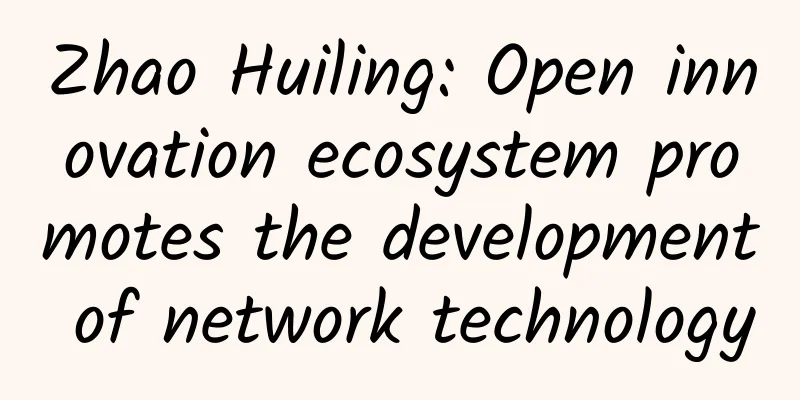12 Ways 5G in Manufacturing Can Boost Industry 4.0

|
We’re on the cusp of a new era of connectivity, but as next-generation wireless 5G networks roll out around the world, what benefits will this have on the manufacturing industry? While consumer-facing telecom companies only talk about download speeds, for manufacturing, the focus turns to ultra-reliable low latency, density, and ubiquitous connectivity. It is these lesser-known features, in addition to the blazing 5G speeds, that will encourage industry to build private 5G network infrastructure in industrial factories and warehouses. The industry is a fluid production line; everything from the Industrial Internet of Things (IIoT) to Industry 4.0 is prevalent, with “smart factories” and “edge computing” not far behind. From high-precision assembly lines and augmented reality overlays to cloud robotics and cable-free factories, here are 12 ways 5G could change manufacturing. 1. AR headsets and glasses While this is 5G hyperbole, there’s no denying the fact that the ability to download data faster will be a major attraction of 5G for the manufacturing industry. 5G networks are ultimately expected to achieve download speeds of 20Gbps and, just as importantly, upload speeds of 10Gbps, which will be 100 times faster than 4G networks. The most immediate benefit of this so-called “enhanced mobile broadband (eMBB)” capability is the ability to easily share and stream 4K-quality video, which could soon turn into virtual reality content and augmented reality overlays. In addition to head-mounted augmented reality headsets, helmets, and glasses, it can also be used for construction, troubleshooting, remote diagnostics, maintenance, and inspection to take advantage of the extra bandwidth. However, advanced 5G networks have yet to reach anywhere near 5G’s peak data rates. 2. Low latency 5G networks will come close to eliminating the problem of latency. Don’t confuse latency with speed or bandwidth. The latter is about how much data you can receive in one second, while latency describes the delay in the line when sending information from one place to another. Latency is measured in milliseconds (ms), and to give you some context, most modern 4G networks have a latency of about 50ms. But in 5G networks using URLLC (ultra-reliable and low-latency communications), latency could theoretically reduce that to just one millisecond, essentially making the latency problem moot. The advantages for manufacturers are many; think of high-precision assembly lines where all machines and robots can be perfectly synchronized in real time, the mass adoption of the Internet of Things (IoT), and even humans controlling machines by touch. However, first-generation 5G networks tend to offer latency of around 10ms, so, for now, latency is still an issue. It is expected that second-generation 5G networks will be primarily about reducing latency. 3. Ubiquitous connectivity 5G is all about capacity and density, all about speed. The 5G network specification allows for up to a million devices per square kilometer, which theoretically breathes life into machine-to-machine (M2M) communications and the entire Industrial Internet of Things (IIoT), a huge attraction for industry. In manufacturing, these devices include everything from sensors, machines and robots to wearables, autonomous vehicles and virtual reality headsets. However, 5G networks have yet to reach this maximum specification, so it may take a few years before the capacity aspect of 5G networks becomes attractive to manufacturers. 4. Smart Factory and Industry 4.0 5G in a manufacturing setting isn’t about tapping into public 5G connections like consumers do. No, 5G in industrial settings is about building custom, private 5G networks that essentially bring the concept of the smart or “intelligent” factory to life. Also known as Industry 4.0, this is about abandoning the old approach of connected systems to encourage more streamlined automation in closed environments. By fully deploying the Internet of Things (IoT) and connecting sensors to every machine, the goal is to predict problems, see them in real time and reduce production downtime. The secret sauce will be analytics software that can process real-time data on every machine and device. 5. Artificial Intelligence and Edge Computing While consumers are focused on their smartphones, fiber optic cables will form the backbone of next-generation 5G networks. And it's the fixed wireless routers in factories and command centers that will bring super-fast wireless connectivity to manufacturers. But to truly achieve the requirement of no latency, and simply to save the expense of sending (storing) all data to the cloud and back from the cloud, factories will need "edge" computing services such as Microsoft's new Azure regions. Also known as "fog" computing, this is the process of computing data and enabling analysis close to the source rather than in the cloud. Cuemini data centers in manufacturing plants, which also add a layer of data privacy and security. 6. Cable-free “cloud-first” factories Manufacturers currently rely on fixed-line networks and rarely use WiFi. But installing 5G fixed-line wireless routers in factories will make cables and clutter a thing of the past for manufacturers. By cutting the cables, factories can become more flexible, allowing production lines to be moved and redesigned more quickly. 5G also means that machines and robots — as well as sensors and even untethered tools like high-precision "smart" screwdrivers — can connect wirelessly to each other and to the cloud. 7. Industrial Internet of Things (IIoT) Also known as machine-to-machine (M2M) connectivity, this is the trend in manufacturing connectivity. In a fiercely competitive and unpredictable global market, industries must streamline and become autonomous. Currently, IIoT is based on 4G, but the massive amounts of data that can be exchanged and streamed, coupled with ultra-low latency, means that IIoT will eventually become a 5G-driven trend. 8. Tactile Internet and Remote Touch 5G is often described as enabling the creation of a “zero-touch factory.” But when is human input needed? The so-called “tactile internet” refers to instant, interactive communications using remote tactile technology, but it’s often described with the example of a doctor performing surgery on someone elsewhere in the world. That’s not the point. Rather, it leverages 5G’s ultra-low latency capabilities to allow people to perform tasks in the same room as robotic-assisted equipment. Imagine powerful remote control from a console to perform maintenance and repairs, including in remote locations, and high-risk and high-precision tasks like mining. 9. Cloud Robotics Get ready for real-time robotics. Production robotics are already firmly entrenched in the manufacturing industry, but 5G is going to do more than just make them wireless. Cue 5G-enabled “cooperative cloud robots,” which use 5G’s lightning-fast speeds and ultra-low latency to sync up with one another. Take two robots on a production line, wirelessly connected to the same “edge cloud” via 5G; they can quickly exchange video streams, but also stay in sync with one another by communicating their exact positions to one another. Ultimately, 5G means one robot can throw a ball while the other catches it. More practically, they can keep equipment and product in perfect balance while working simultaneously. The technology could also be used to keep drones balanced as they buzz around a factory. 10. Self-driving cars In the wider world, self-driving cars may never arrive in their current form. There are simply too many variables for artificial intelligence to accurately predict. However, this is not the case in the closed environment of a large industrial plant. Just like a vacuum cleaner can learn the layout of your house and automatically clean it while you are away at work, a swarm of vehicles can move around industrial plants and warehouses fairly easily. Of course, the technology that will make this possible is 5G, which will allow vehicles to communicate their locations to each other in real time, thus avoiding collisions. If you look beyond public roads and consider industrial 5G use cases, self-driving cars are already being deployed in factories around the world, with KT, South Korea’s largest telecommunications service provider, being the latest company to implement self-driving machines. Korea Telecom has launched 5G self-driving carts at its logistics center, reducing employees' trips to load, unload and transport inventory by nearly 50%. The new system is the first use of next-generation smart logistics vehicles in the Korean communications industry, and it uses two types of 5G self-driving vehicles - "NarGo" and "TarGo" in cooperation with Twinny, a company specializing in indoor autonomous robots and online platforms. We’ve already seen 5G robots helping Chinese authorities combat the coronavirus in public spaces. 11. Time-Sensitive Networking (TSN) Time-Sensitive Networking (TSN) has been gaining steady momentum in Ethernet-based wired networks over the past few years as a family of IEEE 802.1 standards for time synchronization and data transmission within tight latency limits. As the benefits of wireless communications become increasingly apparent, such as greater flexibility, increased mobility and reconfigurability, and lower maintenance costs, interest in extending TSN to the wireless domain is growing. As TSN becomes more widely implemented in Industrial Internet of Things (IIoT) applications and more TSN-enabled devices are deployed, it is no surprise that the industry is now looking to expand similar capabilities on equally advanced wireless technologies such as 5G. 5G use cases have the potential to provide wireless connectivity for a variety of industrial applications, which will benefit manufacturers of end devices and systems across the IIoT, enabling them to easily reconfigure industrial automation, control systems, factory automation, and Industry 4.0. We can expect Wireless TSN and 5G to completely change the future of wireless networks with high reliability, resilience, and security. 12. Video surveillance and detection According to a report from Nokia, 5G-enabled video is the number one use case in the enterprise, with 83% finding it attractive. This is because 75% of the organizations surveyed are already using some form of video surveillance – whether it’s monitoring premises, traffic or operations. “While SMBs may invest in just one 5G camera, larger enterprises are likely to purchase 5G-enabled video surveillance and detection technology as part of a broader suite of security services,” the report said. “This makes the security industry an attractive market channel for CSPs, who can benefit from building partnerships with leading security providers.” |
<<: Interrupt or poll? It's so troublesome to get a data packet!
Recommend
BuyVM: Luxembourg complaint-resistant VPS + storage block restock, 1Gbps unlimited traffic starting at 3.5 CAD per month
BuyVM recently restocked the Luxembourg data cent...
From CDN to edge computing, computing power evolution accelerates again
The COVID-19 pandemic has accelerated the global ...
5 Strategies for Monetizing Mobile Edge Computing (MEC)
In the past few years, cloud services have been u...
RackNerd: $18.18/year KVM-1GB/24G NVMe/2.5TB/multiple computer rooms available
RackNerd is a foreign VPS hosting company founded...
Many countries around the world are competing to deploy 5G using the NSA method. How did it become "fake 5G"?
At 11:00 pm on April 3, 2019, South Korean operat...
Let’s talk about the technological advances needed to realize the 6G vision
The next generation of cellular technology will b...
Gartner: China's IT spending is expected to grow 7.7% in 2021
According to the latest forecast by Gartner, the ...
Tongyou Technology will make further efforts, and "autonomous and controllable" masterpieces will be released soon
This year, "Digital China" was written ...
RackNerd: $11.88/year KVM-1.2GB/25GB/2.5TB/Los Angeles data center
RackNerd announced the hard disk upgrade of DC02 ...
Did you know? Did you know? Telecom networks should focus on multi-layer orchestration
A few years ago, the word “orchestration” was har...
DC9 (CN2 GIA) simple test
Last September, I followed the trend and bought a...
Analysis: Advantages and limitations of wireless data centers
For data center operators, the idea of a wirele...
Telecommunications Industry Predictions for 2018: 5G, NFV and IoT will transform traditional industries
As we all know, the telecommunications industry, ...
McDonald's uses 5G as a gimmick to sell chicken, but the real 5G still depends on the Internet of Things
In the past two days, a marketing campaign that o...
What is Single Pair Ethernet (SPE) and how is it used in industrial applications?
[[416579]] Single-pair Ethernet was originally de...









